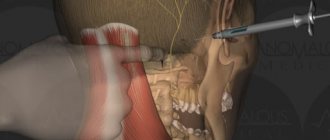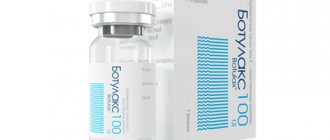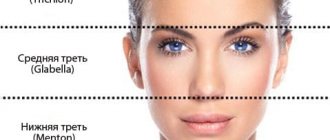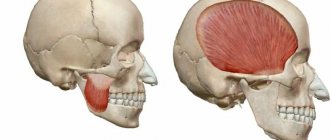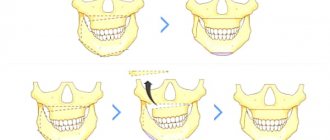The causes of hypertonicity are a group of factors that provoke excess tension in any muscle groups, which persists at the moment of their relaxation. With increased tone, a person’s muscles are dense, constrained, and voluntary movements are difficult and sometimes painful.
Increased muscle tone is one of the main syndromes of neurological diseases and disorders of the nervous system. Brain signals are incorrectly transmitted along nerve fibers, are interpreted falsely or do not reach their destination, which is the cause of incorrect, slow muscle response. Conventionally, three types of hypertonicity can be distinguished, depending on the group of people in whom it is observed:
- Hypertonicity of the uterus in pregnant women;
- Hypertonicity in children (infants);
- Hypertonicity in adults.
These three types of tone are characterized by different symptoms, have a number of different causes and consequences, and require different types of treatment.
Hypertonicity is not a disease, but only its manifestation, a syndrome. Thus, treatment requires an initially correct diagnosis.
Increased uterine tone in pregnant women
Many pregnant women face the problem of hypertonicity of the uterus, which is a muscular organ. Excessive tension in the uterus of a pregnant woman can be dangerous for the unborn child and cause abortion, especially in the early stages, when the embryo has not yet attached well enough to its walls. The body perceives the embryo as a foreign object and tries to get rid of it, push it out of the uterus through its contractions. Sometimes a woman may not feel any tone at all, but most often its signs are:
- nagging pain in the lower abdomen or lower back;
- “petrification” of the abdomen, it becomes hard and changes shape;
- Uncharacteristic discharge, sometimes bloody.
Since the consequence of uterine tone can be a miscarriage, you should consult a doctor at the first signs. Based on the results of the examination, tests, and ultrasound, the doctor determines the cause of this pathological condition and prescribes the necessary treatment.
Causes of uterine hypertension during pregnancy:
- physical exercise;
- overwork;
- stress, nervous state of the pregnant woman;
- diseases of the female reproductive organs such as fibroids, endometriosis, inflammation;
- infectious disease of a pregnant woman;
- hormonal disorders, for example, the level of the male hormone is higher than the female one.
When eliminating uterine tone in pregnant women, the doctor needs to find the cause of this phenomenon. Basically, women require inpatient treatment, complete rest, a minimum of movements and physical activity, and emotional balance. A pregnant woman must understand that she is responsible not only for her life, but also for the life of her unborn child, so you should not self-medicate, but seek medical help at the first suspicion.
The age of 30 – 35 years is the best time to correct existing defects, as the results will appear clearly and obviously, and to prevent expected changes: the body, full of energy, will gladly accept support, enhancing the effect of therapy. The patient of the “optimal period” was 33-year-old Maria. She has not done any cosmetic procedures before, she takes vitamins C, D, B₁₂, E, Omega-3 and iodine preparations.
Victoria Lysikova, dermatovenerologist, cosmetologist at the Center for Cosmetology and Thread Technologies “Adaline Age”, Moscow.
I will tell you how you can work with our patient with a minimum set of tools, that is, as Michel Pistor said, “a skilled hand and a syringe.” And I will describe additional methods of influence that can be used with the appropriate equipment of the clinic.
Improving skin quality. During the consultation, it is important to collect anamnesis and determine home care products and the patient’s diet, food intolerance
products and diseases of internal organs. Sometimes minor biliary dyskinesia leads to a whole complex of inflammatory processes.
After correcting home care, you can already discuss the injection card. When examining the face, attention is drawn to resting creases in the area between the eyebrows, forehead, and around the eyes. And injection methods are aimed not only at correcting existing age-related changes, but also at preventing their manifestations.
Muscular framework. For patients aged 30–35 years, I often recommend botulinum therapy in the Full Face concept. This not only harmonizes the perception of the entire face, but also helps stop age-related changes. The task of a cosmetologist is to see facial wrinkles at rest and evaluate the vector of muscle tension, which is clearly visible in dynamics. And here you need to be able to bring the patient to sincere emotions.
So, let's do an assessment. Upper third of the face: multiple creases along the movement of the frontal abdomen m. occipitofrontalis. Friendly abbreviation m. procerus and mm. corrugators supercilii. Activity m. The orbicularis oculi lowers the tail of the eyebrow and forms crow's feet in the lateral areas of the eyes.
There is a friendly reaction of the muscles of the upper and lower thirds of the face. Incorrect bite forms compensatory stress m. mentalis. Also noticeable is the increased activity of the orbicularis labii muscle, which leads to the “string lip” effect when laughing. Such patients often seek lip augmentation with hyaluronic acid-based gel, but the primary task is to relieve the hypertonicity of the superficial fibers of the m. orbicularis oris and allow the red border to unfold beautifully.
With increased muscle activity and sincere laughter, the formation of a gingival smile attracts attention. Whether to correct it should be decided together with the patient. As a doctor, I like the gingival type of smile, and I resort to its correction only at the request of the patient or when there is excessive muscle activity.
In addition, the activity of the muscle that lowers the tip of the nose is visible - depressor septi nasi, which, together with the activity of m. mentalis will form over time the “profile of Baba Yaga”: a hooked nose and a tucked chin.
An additional “echo of a smile” in the projection of the oval of the face indicates increased activity of m. platysma. We do not have photographs demonstrating the work of the subcutaneous muscle of the neck, but if you see its hypertonicity, you should definitely weaken it.
Thus, having looked at the entire muscle pattern on the patient’s face, we can no longer talk only about local correction of forehead wrinkles, between the eyebrows and crow’s feet. Working in the Full Face concept will allow the patient to see his face in its original, relaxed and harmonious form. And only after two weeks can you begin contour correction or thread technologies.
Contour plastic. The principle of contouring, based on vertical profiling, came to us from Asia. It is based on the primary correction of hyaluronic acid gels along the midline of the face - in our case, this is the correction of lipoatrophy of the forehead area and an increase in the missing volume of the chin.
When choosing the density of the gel for injection in the forehead area and correction of lipoatrophy, preference should be given to drugs of medium density and in a volume of no more than 0.5 ml. The capacity of this zone does not allow the use of large volumes of gel.
High-density filler can be used to correct the chin area. It is advisable to implant at three points with the distribution of the gel strictly periosteal and with the formation of a female chin shape.
When assessing the patient's profile, lipoatrophy of the deep mid-cheek fat pads is visible. It is very important to accurately determine the exit points of the neurovascular bundles before performing injections and choosing an instrument: needle or cannula. Implantation of the gel should be carried out strictly periosteally, no more than 0.2 ml of the drug per bolus - to prevent iatrogenic complications.
Additional methods of influence. You can add techniques aimed at deeper work with tissues, the maximum result of which will be visible after 6 – 12 months. In our clinic we will offer the method of needle radio wave exposure and reinforcing threads based on 90% PLA.
The hardware method of exposure will not only reduce the skin flap and make the oval of the face clearer, but will also significantly strengthen the ligaments of the face, which guarantees both an immediate improvement after the procedure and a cumulative result after 5 – 6 months. At the age of 30 – 35 years, hardware methods give the most pronounced tightening effect.
The purpose of thread reinforcement is to move the skin along the implanted thread and provide tissue fixation above the current location. The formation of new collagen fibers occurs after 3–4 months: the overhang of the soft tissues of the face is significantly reduced, the nasolabial fold and marionette lines disappear.
The level of implantation and fixation of threads is strictly in the pancreas. Rehabilitation is about one week; these methods can be combined with injection procedures.
It makes sense to add additional methods if the patient has a pronounced fear of age-related changes or fear of injections.
Anastasia Sharmanova, dermatovenerologist, cosmetologist at the Center for Cosmetology and Thread Technologies “Adaline Age”, Moscow.
A beautiful young patient, a representative of the “tired” morphotype of aging, the main problem of which is a progressive violation of microcirculation. Therefore, I would recommend paying attention to microcurrent therapy and injection procedures with a lymphatic drainage effect (redermalization with sodium succinate).
To correct facial activity, the botulinum therapy procedure is suitable. Injections of botulinum neuroprotein into the frontal and interglabellar areas, the upper-outer part of the orbicularis oculi muscle will allow for a slight levation of the eyebrows and, as a result, improve the clinical picture in the upper eyelids.
The beginning changes in the oval of the face and the appearance of folds are noteworthy. To prevent changes in the lower third, a botulinum therapy procedure can be performed, initially restoring the angle of the lower jaw using contour plastic surgery with preparations based on hyaluronic acid.
To prevent the movement of fat bags and fixation of soft tissues, thread reinforcement is recommended. They will improve the structural condition of the skin, increase its turgor and elasticity.
RF technology (Morpheus 8) can also be used for compaction and lifting. Using fractional RF needle electrodes, which are inserted into the skin and heat deep tissues, partially denaturing collagen, it is possible to cause contraction of old collagen and stimulate the formation of new collagen types I and III, as well as elastin.
Mild asymmetry and hypertonicity of the mental muscle require examination of the dental system and consultation with an orthodontist.
Zukhra Amin, chief physician and general director of the Center for Cosmetology and Thread Technologies “Adaline Age”, Moscow.
An objective analysis of the patient’s appearance was carried out using photographs - without collecting and taking into account anamnesis, examination with magnification, manual examinations and dynamic support. Accordingly, in the presence of all these factors, there is a high probability of changing the assessment of input data and, consequently, recommendations.
Before us is a young woman of Slavic appearance. The facial skull is oval in shape. The forehead is wide, sloping, without pronounced frontal tubercles. The temples are smooth, without anatomical excavations. The zygomatic arches are developed symmetrically. The brow ridges, palpebral fissures and ears are symmetrical. The nose is straight, without curvature.
Normal development of the outer jaw, slight underdevelopment of the lower jaw in the chin area. Dentoalveolar extrusion.
Hypertonicity of the facial muscles of the upper third of the face, as evidenced by static and dynamic wrinkles on the forehead, in the area between the eyebrows and in the lateral zones of the orbicularis oculi muscles. Hypertonicity of the mentalis muscle - the appearance of a “nut shell”. Perhaps there is hypertonicity of the masticatory muscles without their aesthetic manifestations, which may become obvious in the future. Hypertonicity of the platysma crura.
Some photographs show slight exposure of the upper gum. The exact cause of this defect cannot be determined. Most likely, the problem is in elongated upper teeth, which is accompanied by a downward displacement of the gum tissue and its visualization with a wide smile, as well as hypertonicity of the muscles that elevate the upper lip.
Subcutaneous fat corresponds to body type. Drooping of a fixed eyelid does not correspond to age. The prevailing development of the nasolabial fat compartment is determined. Nasolabial folds. Obvious ptosis of the middle third of the face.
The skin is clean, perhaps not quite smooth due to slight hyperkeratosis, but closer to normal. The phototype is most likely III – IV.
In the lateral projection, there is uneven posture, which with age will affect the condition and appearance of the front surface of the neck: sagging, folds.
The planned assistance of a cosmetologist for the correction of anatomical and age-related distortions of appearance is expressed in the following:
- correction of hypertonicity of facial wrinkles (forehead, between the eyebrows, orbicularis oculi muscles),
- correction of hypertonicity of the mentalis muscle, muscles that lift the upper lip, and platysma crura. If necessary - chewing muscles,
- To prevent further ptosis of the soft tissues of the middle third of the face, the installation of reinforcing threads in lifting techniques is required. Thread lifting in this case is necessary as a correction procedure for already obvious manifestations of ptosis of the middle third, as well as as a prevention of the transition of the “tired” type of aging to deformation. Prevention of facial contour distortion,
- seasonal peelings, adequate home care to maintain skin condition,
- scheduled injection skin moisturizing,
- the use of photoprotective agents to prevent photoaging.
Consultations with an orthodontist, osteopath, plastic surgeon (fixed upper eyelid), monitoring the level of vitamin D, B vitamins, ferritin, sex hormones, and regular scheduled consultations with a gynecologist and endocrinologist are recommended.
You can read the article in Oblik magazine. Esthetic guide No. 5(38), pp. 116-123
Hypertonicity in infants
In 90 cases out of 100, children in the first months of life experience increased muscle tone. There are two main causes of this condition in infants:
- physiological characteristics;
- disturbances in the functioning of the central nervous system.
In the first case, the baby’s muscle tone is explained by the fact that during intrauterine life the child was in a limited, small space of the mother’s uterus and his posture was forcedly constrained, the so-called fetal position. The arms and legs of the fetus are pressed to the body, and the chin to the chest. After birth, this position is the most familiar and safe for the baby, the baby needs to get used to the new world around him, usually by 3 months the muscles gradually relax, and the increased tone goes away on its own, without the need for treatment. However, if hypertonicity persists after 3 months, this may indicate that the baby’s nervous system has been damaged. The main causes of hypertension in children older than 3 months lie in the influence of negative factors during the period of intrauterine development of the fetus, diseases, and birth injuries. It could be:
- bad habits of the expectant mother: smoking, alcohol, drugs;
- infectious diseases suffered by the mother during pregnancy, or her chronic diseases;
- early or late toxicosis of the pregnant woman, uterine tone, threat of miscarriage;
- Rhesus conflict between mother and fetus;
- perinatal encephalopathy;
- rapid or prolonged labor;
- fetal hypoxia in utero or during childbirth;
- various birth injuries.
Typically, neurologists prescribe procedures for children with increased muscle tone that can only relieve the main symptoms, but they do not find the causes of the disorders and do not solve the problems. For example:
- physiotherapy;
- physiotherapy;
- aromatherapy;
- massotherapy;
- drug treatment.
The most effective method of treating hypertension in young children is osteopathic. An osteopathic doctor views the human body as a single whole, and sees all its systems and organs as interconnected. Osteopaths can treat one organ while influencing another, identifying the cause of the pathology and combating its consequences. Osteopathic treatment is based on a special massage. The doctor's fingers are extremely sensitive and receptive, and movements and manipulations are very soft and gentle. That is why the effects of osteopathic techniques on infants are safe, painless and effective. An osteopath can easily help a child’s nervous system, which is not fully formed, to function fully.
[Un]attainable ideal
Ideally, the muscle fiber should work like a spring: compress when the nerve endings command “come on!”, and then relax and return to its original position.
But muscle hypertonicity changes everything! Spring muscles contract or stretch - and remain in a tense state. They can no longer relax on their own.
Hypertonicity of the facial muscles is the main cause of facial wrinkles and creases, swelling, sunken cheeks, and loss of proportions. It can be measured using special equipment - an electromyograph. And it can be determined by appearance and subjective sensations. Frequent signs of hypertonicity are numbness of the face in the cold, grinding of teeth, harsh facial expressions, an exhausted, tired appearance, eyebrows constantly shifted to the bridge of the nose.
Tight muscles drive themselves into a trap: they squeeze blood vessels, blood with oxygen and nutrients stops flowing to the muscle fiber - and the muscles simply atrophy.
Increased muscle tone in an adult
In an adult, muscle tone is observed as a consequence of disruption of the nervous system; this is one of the indicators of the presence of neurological diseases. There are 2 types of increased tone: spastic (localized) and rigid (applies to all muscles at the same time). Hypertonicity can be caused by:
- demyelinating neurological diseases such as multiple sclerosis;
- pathological processes in the vessels of the brain and spinal cord (stroke);
- cerebral palsy;
- various brain or spinal cord injuries;
- disruption of the functioning of nerve impulses.
With a spastic type of tone, disruptions in the functioning of nerve centers and pathways are observed, and with a rigid type, pathologies of the brain or spinal cord are observed.
Hypertonicity in adults is a sign of a serious neurological disorder resulting from the presence of severe diseases of the nervous system. In this case, it is most rational to use complex therapy. Along with traditional medicine, osteopathy can come to the rescue, which significantly alleviates the patient’s condition. Osteopathic techniques are very gentle, they bring the patient a feeling of relaxation, tranquility, and warmth. With his hands, an osteopathic doctor can improve muscle function, blood flow, and influence bones and joints, while he fights not the clinical manifestations of the disease, but its cause. The osteopath triggers the necessary mechanisms that, like a clockwork, normalize the functioning of the entire body as a whole.
The tension is off the charts
Employees of the Revitonika rejuvenation school, led by Anastasia Dubinskaya, spent 3 years studying the tone of the facial muscles of 151 women from 36 to 50 years old at the Laboratory of Medical Psychology of the Moscow Scientific and Practical Center for Medical Rehabilitation, Rehabilitation and Sports Medicine of the Department of Health. They conducted a study of the most emotionally sensitive facial muscles: the corrugator muscle, the masseter muscle, the depressor anguli oris muscle, and the nasal muscle.
And the results are disappointing: if we consider these muscles separately, each of them is tense in 3 out of 4 women (and even more often in percentage terms!). And this is the minimum: many women have spasms in several muscles at once.
How do you know if you are one of this unlucky number? In her lecture “Top 10 Causes of Muscle Hypertonicity” on the Revitonics YouTube channel, Anastasia Dubinskaya suggests taking 2 quick and simple tests that will help determine the presence of facial hypertonicity.
Skin care tips
In addition to gymnastics and massage treatments, it is important to properly care for the delicate skin of the neck and face.
- Every day, tone your skin with ice cubes made from herbal infusion. This will give your face a fresh look and blush. Ice perfectly prevents facial wrinkles.
- When using the cream, do not rub it on the skin or stretch it. It is much more effective to apply the cosmetic product with your fingertips using patting movements.
- Do not rub your face with a towel after washing, pat lightly - this will be enough.
